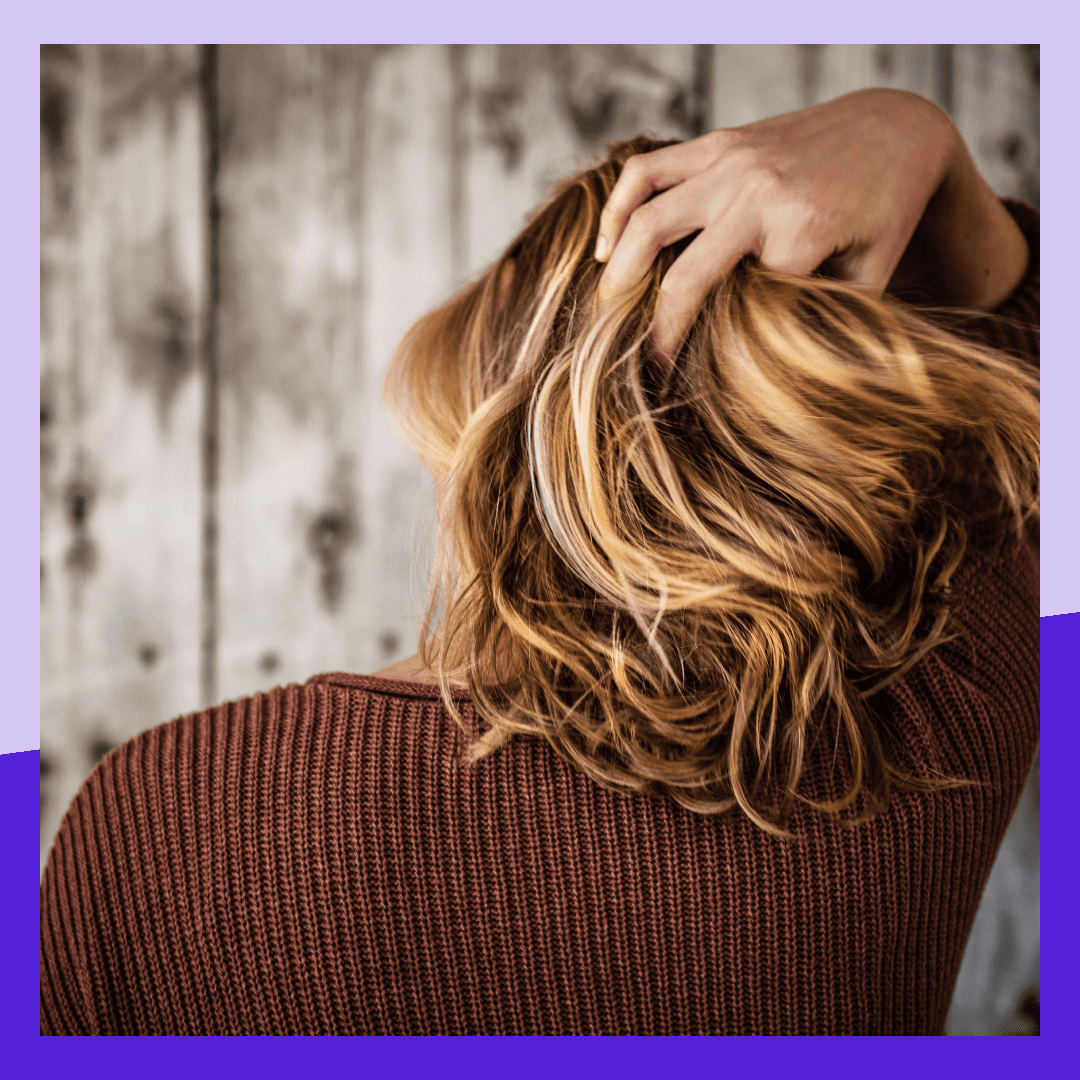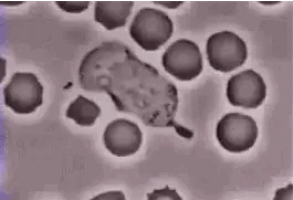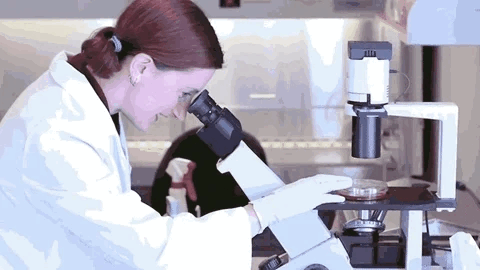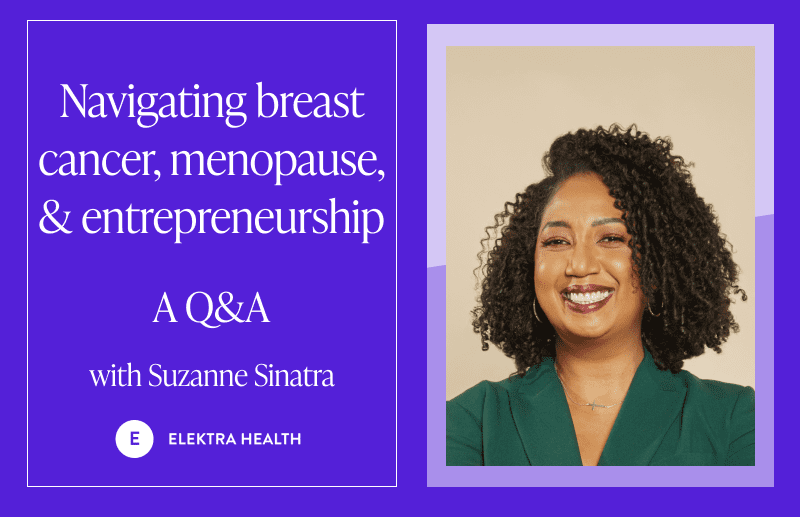
Noticing some hair loss or thinning around menopause? You’re not alone. As the most common type of hair loss in women, androgenetic alopecia — aka female pattern hair loss (or FPHL, for short) — often starts in our 40s and 50s, with 25% of women experiencing symptoms by age 49, 41% by age 69, and over 50% by age 79. Generally speaking, hair thinning on the top of the head, as well as the front and sides of the hairline, is more common than noticeable bald spots. However, some women may also experience symptoms of hirsutism, a condition that results in the growth of dark, coarse hair where we don’t want it (think face, chest, and back).
Below, we break down the types and causes of hair loss, whether or not it’s permanent (spoiler alert: it’s not), and what you can do about it.
Remind me again why this is happening?
Like most symptoms of perimenopause and menopause (actually with most everything having to do with women’s health), there isn’t a singular cause. But here are key factors which we know play a roll:
Hormonal changes
During menopause, decreased estrogen and progesterone are compounded by relatively higher testosterone (an androgen which, for the record, isn’t just only hormone). It’s these hormonal fluctuations that can contribute to FPHL.
Genetics
Women with a history of hair loss or pattern baldness on either side of the family are at increased risk.
Higher stress levels
Whether emotional or physical (i.e. from an illness), stress may lead to hair loss as much as 4-9 months following the stressful event or trigger.
Medications & medical conditions
For certain medications (such as blood thinners or antidepressants), hair loss is a side effect. The same goes for medical conditions, including hypothyroidism, gluten intolerance, iron deficiency, and polycystic ovary syndrome, PCOS.
Okay, so is hair loss from menopause permanent?
NOPE. Aaaand cue the happy dance.
Studies show that, with the proper treatment of mild-to-moderate FPHL, it IS possible to:
- Stop the progression of hair loss
- Reverse or stabilize the process of hair follicle miniaturization (a term that refers to the thinning of hair follicles, which leads to receding hairlines/balding)
- Promote the regrowth of healthy hair
(Although it should be noted that the rate of re-growth varies individual-to-individual.)
This is especially true when stress is a contributing factor since all hair follicles are on a cycle. While physical or emotional stress push more follicles into what’s called the “resting phase” (which leads to hair loss), the cycle will eventually return to normal (“growing phase”) with stress management and hair care techniques.
What can be done to stop menopausal hair loss and hair thinning?
Nutrition
Maintaining a nourishing and balanced diet can go a long way when it comes to reducing some menopause symptoms, and hair loss is no exception. There have been studies on the impact of gluten sensitivity and its severe version, celiac disease, on hair thinning, so if you suspect this may be affecting you, it could be worth seeing your healthcare provider or allergist for testing — or a simpler option would be to cut out gluten from your diet for at least a few months to see if there’s a difference in your hair health, breakage, and hair shedding.
READ MORE: Elektra Guide To Nutrition During The Menopause Transition
Dietary Supplements & Over-The-Counter Solutions
Iron
Iron deficiency has been extensively studied as one of the most common causes of hair loss. The reason? There are multiple genes in the human hair follicle, some of which may be regulated by this essential mineral. This explains why some women experience reduced symptoms on the proper iron supplementation.
Collagen
As the most abundant protein in the body, collagen is found in tendons, ligaments, and skin. Our bodies naturally produce it, and certain foods (e.g., bone broth) are chock-full of it. Some opt to also take it in supplement form in order to support healthy, strong hair, and there is some evidence that it can help. It works by providing essential amino acids that build keratin, the hair’s primary protein. It also helps fight damage to hair follicles and may help prevent age-related thinning.
Minoxidil (aka Rogaine)
This drug dilates the blood vessels of the skin when applied to the scalp via spray or shampoo, increasing blood flow to the hair follicles. Approximately 40% of patients show a significant improvement when taking minoxidil (the generic version of Rogaine). Results typically appear after about one year and, if it works for you, you’ll need to continue applying it every day to sustain the results. If you decide to give minoxidil a try, be sure to check prices — minoxidil marketed to women is often more expensive than minoxidil marketed to men. Egregious, but true.
Nutrafol Women’s Balance
This supplement targets the root cause of thinning (e.g., fluctuating hormone levels, stress, and metabolism). It has ingredients that help support hair regrowth and decrease testosterone, which can contribute to hair loss. In a clinical study, women saw stronger, thicker hair growth with more scalp coverage after six months.
READ MORE: Elektra Guide To Supplements For Menopause
Hormonal hair loss treatment
Finasteride, also known as Propecia or Proscar, is also used for hormonal hair loss treatment in women. This drugs blocks the conversion of testosterone into its more potent cousin called DHT, which contributes to hair loss. Typically prescribed by dermatologists, there are some studies showing efficacy in women.
—
For information on additional treatment options (cleansing/styling hair products, hair transplants, etc), refer to our full guide to hair loss during menopause.
Interested in learning more about other menopausal symptoms? We’ve got expert guides on hot flashes/night sweats, mood swings, weight gain, and more.


